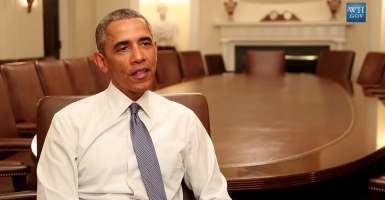In a video previewing his State of the Union address, President Obama touted recent jobs numbers. “Last year was the best job growth we had seen since the 1990s,” he said, “The unemployment rate’s now dropped to 5.6 percent.”
But there’s more to the story.
Despite the falling unemployment rate, long-term unemployment remains high at 1.8 percent of the entire labor force. Obama has struggled in recent months, wanting to tout the broad economic recovery but knowing many Americans are still outside the recovery looking in.
Why has long-term unemployment remained so high for so long? As simple as it sounds, the main reason is that the recovery was so slow. The experience of the 20th century taught economists to think of recessions like trampoline jumps: the bigger the drop, the faster the recovery. But the first big recession of the 21st century broke the trampoline, and the recovery has been much slower than usual.
In labor markets, the slow recovery is manifest in a persistently low employment-population ratio, even among 25-to-54 year olds. As my colleague James Sherk noted, in the last job report “the labor force participation rate dropped 0.2 percentage points to 62.7 percent—tied with this past September as the lowest labor force participation since 1978.” In national income, the slow recovery shows up as a large and barely shrinking gap between estimated potential output and actual output.
Obama will use the State of the Union speech tonight as another chance to take credit for the recovery. But the data suggest he should be apologizing for how long it took to get here and how many people have been left jobless and dependent in the interim.





























